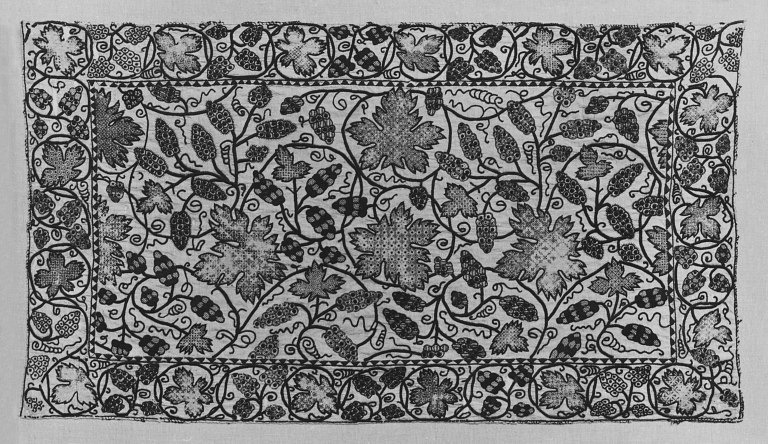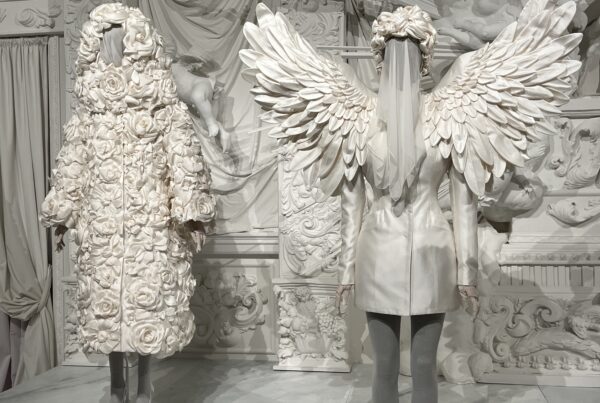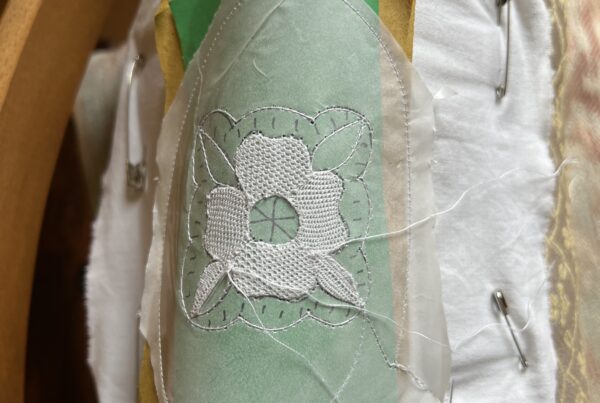Blackwork is a counted thread method of embroidery that involves using straight stitches in a contrasting color on evenweave fabric.
The true origins of this type of embroidery appear to trace back to the Moors and Arabs, who brought it to England in the thirteenth century. This introduction occurred as soldiers and noblemen returned from the Crusades in the Holy Lands.
It is believed that the Spanish princess, Catherine of Aragon, brought blackwork to England in 1501. After her marriage to King Henry VIII, her passion for embroidery significantly influenced the English court for over twenty years, until their divorce. Her most used stitch, known as “Spanishwork,” became part of Spanish culture during the Moors’ rule and was later renamed “blackwork” after Catherine’s marriage was annulled in 1533.
Blackwork embroidery served more than just decorative purposes; it was used to reinforce collars and cuffs and to disguise dirt due to the poor hygiene of the period. The lower classes often utilized blackwork as a cheaper alternative to lace, which was incredibly difficult and expensive to obtain.
To start a blackwork embroidery project, you’ll need an evenweave fabric such as Aida, a cotton fabric made especially for counted needlework, featuring two threads woven into blocks rather than single threads. For beginners, it is not advisable to choose very fine fabric, as it can be challenging to count the threads accurately.
Regarding threads, there are many alternatives:
- Stranded cotton (DMC Mouliné Special): Consists of six strands of cotton thread that can be separated into groups to provide different thicknesses and shades.
- Perlé cotton no. 5 and 8: Has a shiny finish and soft twist.
- Coton à broder no. 16: A single or three-strand thread equivalent to two strands of Perlé or Mouliné.
- Ordinary machine sewing cotton: Harder to work with than stranded cotton but gives a crisp effect.
For blackwork embroidery, like Hardanger, it is advisable to use a blunt needle, as regular sharp needles can pierce through the threads of the fabric, distorting the holes.
Another essential material for starting your blackwork project is a frame, which comes in various sizes and types, depending on the size of your embroidery. It’s crucial to keep your fabric tight.
- Embroidery hoops: Ideal for small designs, as the entire embroidery should fit inside the frame. Moving the hoop around your work can distort the stitches and mark some types of fabric.
- Rectangular frames: Perfect for accommodating large designs, keeping the fabric tight throughout the process.
Lastly, consider the designs. Many embroiderers use ready-to-make kits from craft shops or magazines, but with experience, you might want to create your own. I suggest taking inspiration from historical embroideries found in museums, exhibitions, or online galleries.
Ultimately, blackwork embroidery is a testament to the enduring appeal of handcrafted art. Its evolution from practical application to decorative artistry highlights its versatility and charm. Whether you choose to follow traditional patterns or innovate with your own designs, blackwork provides a fulfilling and expressive outlet for your creativity. Dive into this captivating craft and discover the joy of bringing timeless beauty to life, one stitch at a time.




